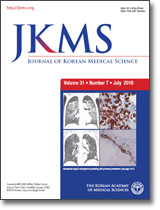Trang chủ - Publication - "Study Design for the 2016 Baseline Survey of a Health System Strengthening Project in Quoc Oai District, Hanoi, Vietnam"
"Study Design for the 2016 Baseline Survey of a Health System Strengthening Project in Quoc Oai District, Hanoi, Vietnam"

Van Minh Hoang1 , Juhwan Oh2 , Bao Ngoc Nguyen1 , Le Minh Dat1
Jong-Koo Lee2,3 , Thi Giang Huong Tran4,5 Van Huy Nguyen6
Seung-Pyo Lee7, Kyung-Sook Bang8, Youngtae Cho9, Sun-Young Kim9
Hwa-Young Lee2, 10, Quang Cuong Le11, Narshil Choi2, Thai Son Dinh12, and
Ngoc Hoat Luu12
Affiliations
1: Center for Population Health Sciences, Hanoi University of Public Health, Hanoi, Vietnam
2: JW LEE Center for Global Medicine, Seoul National University College of Medicine, Seoul, Korea
3: Department of Family Medicine, Seoul National University College of Medicine, Seoul, Korea
4: Department of International Cooperation, Ministry of Health, Hanoi, Vietnam
5: Department of Global Health, Hanoi Medical University, Hanoi, Vietnam
6: Department of Health Organization and Management, Hanoi Medical University, Hanoi, Vietnam
7: Seoul National University School of Dentistry, Seoul, Korea
8: Seoul National University College of Nursing, Seoul, Korea
9: Seoul National University School of Public Health, Seoul, Korea
10: Department of Global Health and Population, Harvard T. H. Chan School of Public Health, Boston, MA, USA
11: Health Strategy and Policy Institute, Hanoi, Vietnam
12: Department of Biostatistics and Health Informatics, Hanoi Medical University, Hanoi, Vietnam
Abstract
Background: In order to provide essential scientific evidence on the population's health status and social health determinants as well as the current capacity of the health care system inVietnam to health policy makers and managers, Vietnam Ministry of Health, Hanoi Universityof Public Health, Hanoi Medical University, and Ho Chi Minh University of Medicine andPharmacy collaborated with Seoul National University (Korea) and conducted a health systemsurvey in the Quoc Oai district (of Hanoi capital) that represented northern rural Vietnam.
Methods: The study design was a cross-sectional study. The survey covered different topics (more than 200 questions) and was administered in three separate questionnaires: 1) Basic information of all household members; 2) Household characteristics; and 3) Individual characteristics. Socio-demographic characteristics among the households and individuals were collected from 2,400 households sampled by multi-stage cluster sampling method: more than 200 questions.
Results: The household size of Quoc Oai was larger than the national average and there was no significant difference in gender composition. In addition, the proportions of pre-elderly, age 55–64, and elderly group (65 years old and over) were higher than the national population statistics. In this context, demographic transition has begun in Quoc Oai.
Conclusion: This study design description provides the basic information about a baseline survey of a future prospective cohort (as a part of a collaborative project on strengthening the health system in Vietnam) to the prospective data user of this survey
Full-text link: Study Design for the 2016 Baseline Survey of a Health System Strengthening Project in Quoc Oai District, Hanoi, Vietnam
Source: Center for Population Health Sciences - Hanoi University of Public Health
TIN CÙNG CHUYÊN MỤC
- "Improvement in Compliance With Smoke-Free Environment Regulations at Hotels and Restaurants in Vietnam..."
- "Review of Public Financing for Water, Sanitation, and Hygiene Sectors in Vietnam"
- "Describing the pattern of the COVID-19 epidemic in Vietnam"
- "Vietnam Climate Change and Health Vulnerability and Adaptation Assessment, 2018"
- "Changes in, and predictors of, quality of life among patients with unstable angina after percutaneous coronary intervention"
- "An adaptive model of health system organization and responses helped Vietnam to successfully halt the Covid-19 pandemic..."

